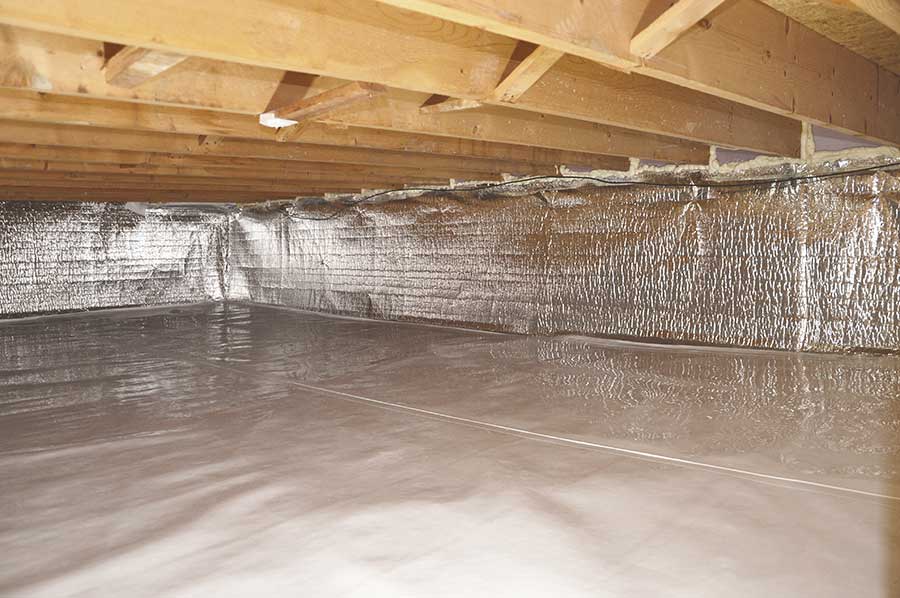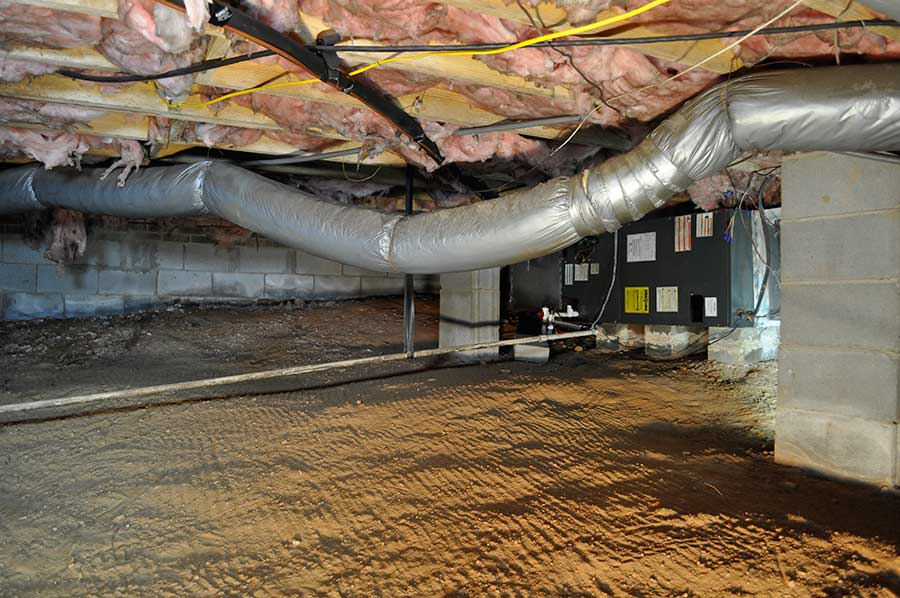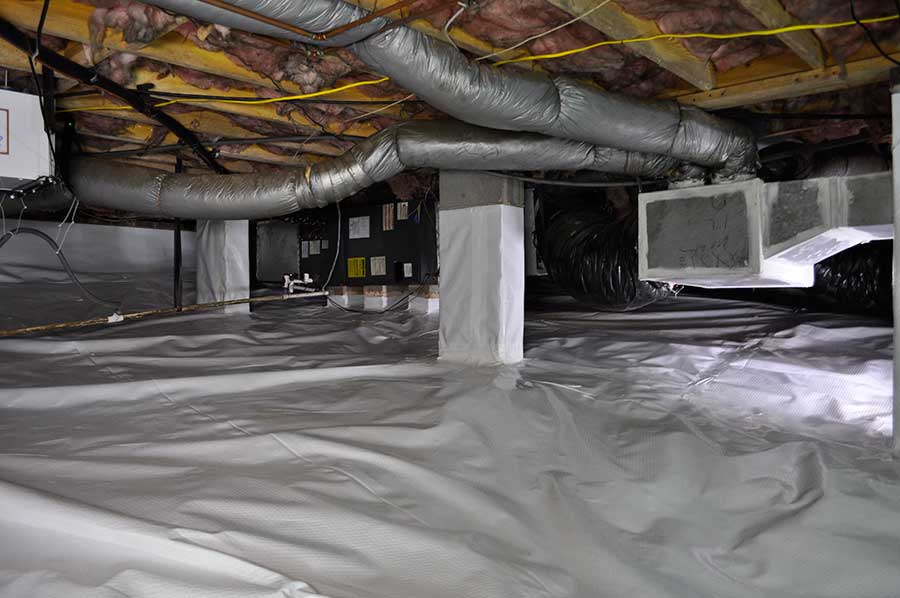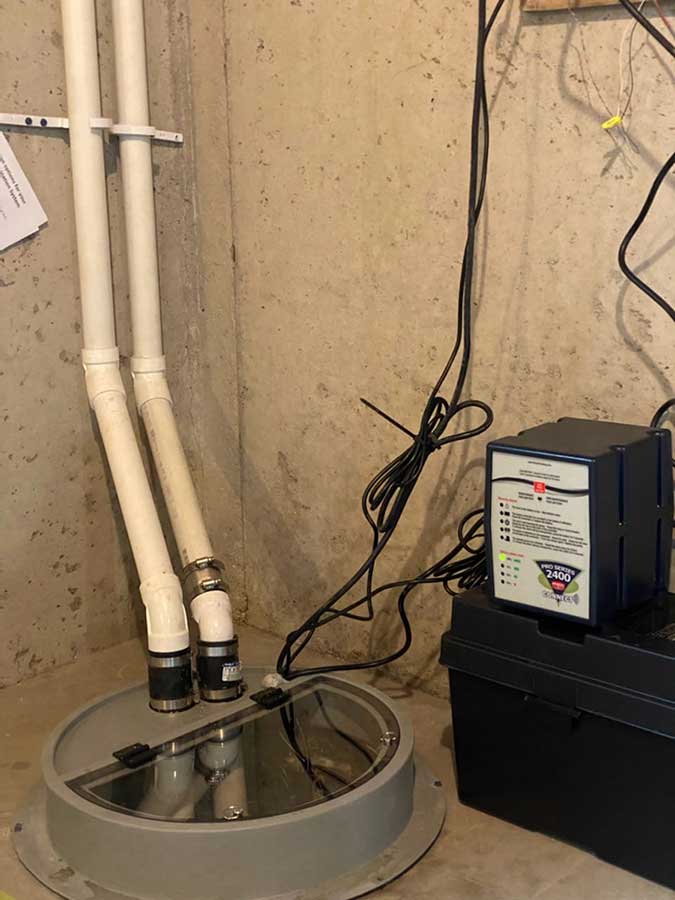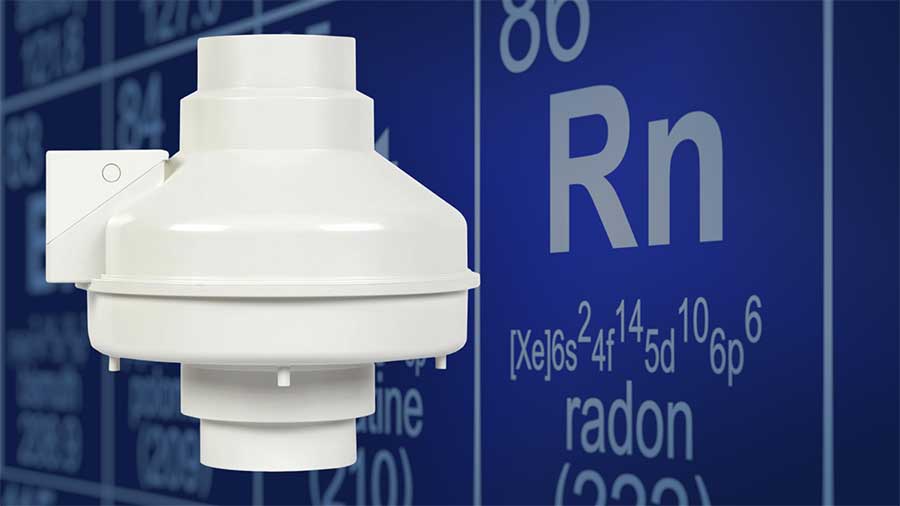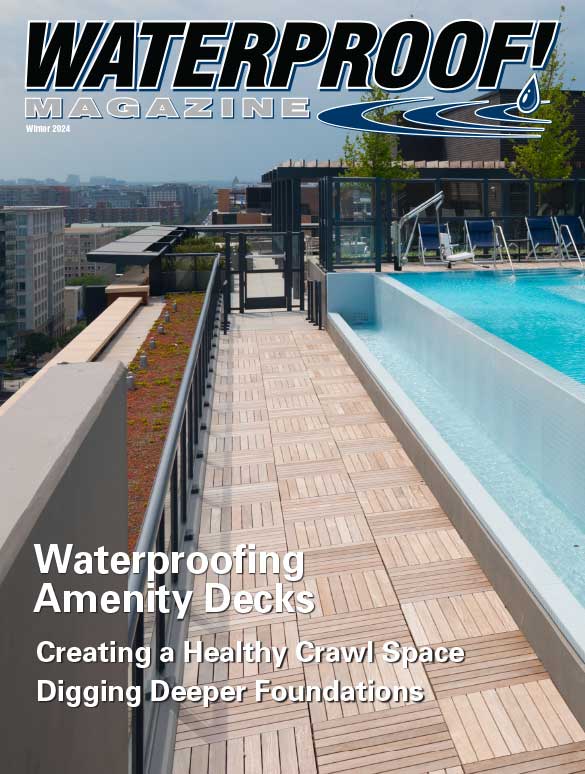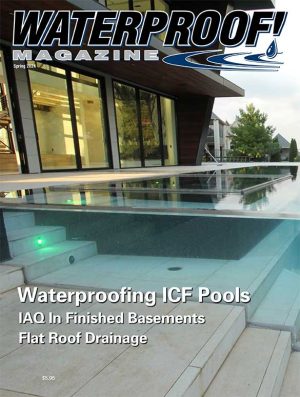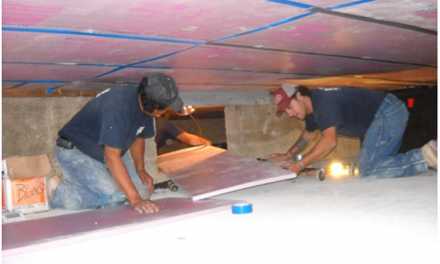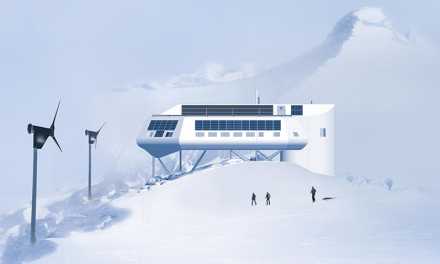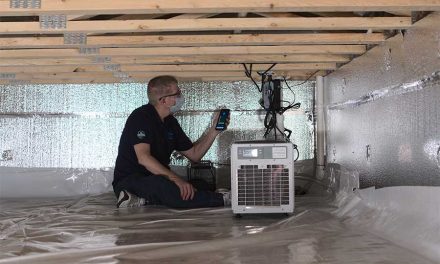By Patrick Nevison, P.E.
(4) Photos courtesy of Metropolitan Industries
A finished crawl space, above. An unfinished crawl space below at left, and the same crawl space after encapsulation, at right.
Excess moisture in a crawl space can lead to several issues throughout the home. Areas with high humidity are ideal for mold growth. Mold can cause respiratory ailments for the occupants of the home. Excessive moisture can also allow the building materials to rot and lead to unsafe structural components supporting the floors above. A crawl space can also be a source of radon. Radon is one of the leading causes of lung cancer and is in many parts of the country.
Controlling Moisture
The first step in creating a healthy crawl space is controlling excessive moisture issues. If there are large amounts of water entering the crawl space, an interior drain tile system may be needed. The interior drain tile system will go around the perimeter of the crawl space, below the surface, and connect to a sump basket with a sump pump. The drain tile will collect water coming in, drain it into the sump basket, and the pump will discharge the water outside of the home. If the crawl space has a concrete floor, a section of the floor will need to be removed and replaced near the foundation wall to install the system. Then a drain board will be installed to guide water from the walls into the drain tile system. If there is not a concrete floor, a floor liner will need to be installed to prevent moisture from entering the crawl space and spreading to the rest of the home. SafeBasements sells floor liners and wall liners, along with other products. Floor liners are heavy poly liners with drainage fabric on the bottom and are a very durable, zero perm liner, great for areas that may be used for storage. Wall liners are foil-backed poly liners with a small amount of foam insulation between the layers. The wall liner may be tucked beneath the floor liner, or into the edging of the drainage system if there is a concrete floor. SafeBasements rigid foam board insulation may also be installed on the walls in cooler environments.
Dehumidification
After the crawl space is waterproofed and encapsulated, a dehumidifier may be installed to control the humidity levels. Aprilaire offers a range of dehumidifiers to accommodate any crawl space. Their E series has units with capacities ranging from 70 pints per day, which can handle areas up to 2,200 square feet, up to 130 pints per day, which can handle areas up to 7,200 square feet. The E-series dehumidifiers are all Energy Star–certified. They also have thermostats and control options which allow homeowners to monitor the humidity throughout multiple spaces of the home without entering the crawl space. Pro-Series pumps in the sump basket have technology available to allow monitoring the system remotely as well. The dehumidifier can affect the humidity throughout the whole home, not just the crawl space. This will make the living space more comfortable in the summer months and reduce the amount of work required by the air conditioner. The dehumidifier also includes an air filter to help remove particles from the air. Keeping the relative humidity of the home in the 40 to 60% range will help to fight viruses, bacteria, mold, and other airborne pollutants.
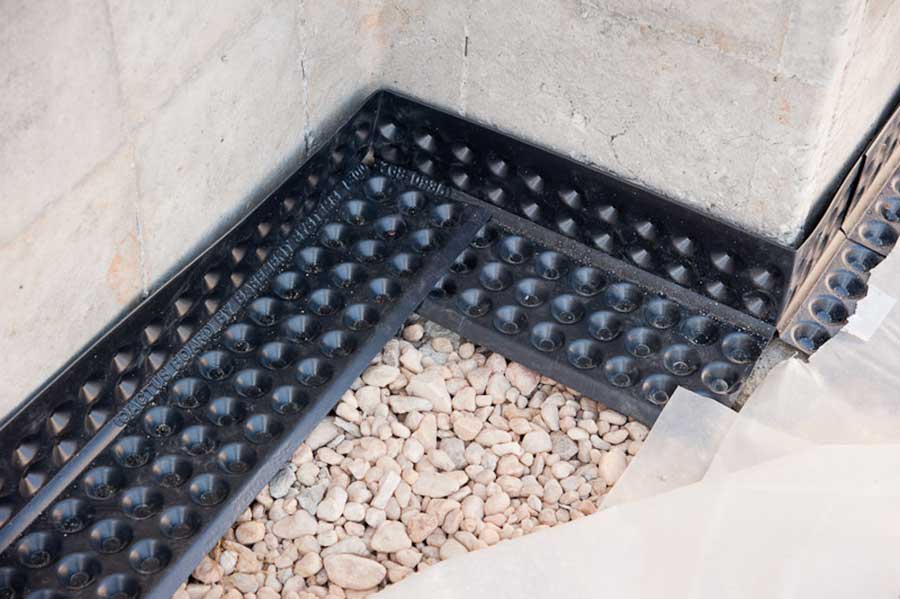
Installing an on-footer drainage system requires removing four or five inches of concrete floor slab adjacent to the exterior walls, and replacing that part of the slab with new concrete once the product is in place. Photo courtesy Ken Cotten/Waterproof.com
Radon Removal
Removing radon from the home can be accomplished after the crawl space has been sealed. Radon gas can flow up through the soil into the crawl space and into the rest of the home. A radon mitigation system will include a fan in the upper portion of the home typically connected to 3- to 4-inch PVC pipe connected to a sump basket, interior drain tile system, or into a hole in the concrete slab or sealed beneath the encapsulation. The fan will create suction beneath the slab or encapsulation pulling the radon out of the home. It is best to test for radon and if the levels are high, above 4 picocuries per liter, the first step would be to encapsulate the crawl space if there is a dirt floor, then you may re-test to see if that reduced the levels enough or add a mitigation system. If there are several crawl spaces or basements attached to crawl spaces, the radon mitigation system may need to be plumbed into each area to reduce the amount of radon in the home to an acceptable level.
Patrick Nevison, P.E.,
Patrick Nevison, P.E., has been an employee of SafeBasements since 2013 and is a licensed professional engineer in Minnesota, North Dakota, South Dakota, Wisconsin, Iowa, and Nebraska. Patrick lives in a home with two crawlspaces and a basement and enjoys making sure they are safe!
Winter 2024 Back Issue
$4.95 – $5.95
AI in the Waterproofing Industry
Case Study: Northwestern University’s Simpson Querrey Biomedical Research Center
Installing and Protecting Green Roofs
Protecting the Commercial Building Envelope
Understanding Hydrostatic Pressure
Employer Responsibilities To Employees and Law
By Gregory Fahrenbruch
Description
Description
Trade Show Preview
When the new year rolls around, so does the trade show schedule. Here are lists of the booths that relate to the waterproofing industry for World of Concrete, the International Builders’ Show, and the International Roofing Expo.
Waterproofing Amenity Decks
By Richard C. Hayden
Building owners and developers are continuing to place increasing value on the roof spaces that every building needs. In the increasingly competitive real estate market, building owners are demanding that the roof space function at a much higher level.
Creating a Healthy Crawl Space
By Patrick Nevison, P.E.
Healthy crawl spaces are ones in which excess moisture and radon are dealt with, among other things. Moisture and radon in a crawl space can lead to several issues throughout the home.
Case Study: Smart Crawl Space In New Jersey
By ISI Building Products
Outside construction trades and building science circles, few homeowners grasp how impactful the crawl space can be to the overall health of a structure.
Digging Deeper Foundations
By Iltaz Alam
With space at a premium in many urban areas, developers are digging deeper foundations to increase the square footage of high end residential, commercial and mixed-use building projects.
Case Study: Washington, D.C.’s Florida Ave. NE
By Scott Schendel
EPRO was recently involved in a critical project located in an up-and-coming area of the city, called Florida Avenue NE. This corridor has multiple land uses and several critical public transit connections and is also experiencing a high level of new development.
Additional Info
Additional information
| Weight | N/A |
|---|---|
| Magazine Format | Digital Download Magazine, Print Mailed Magazine |

